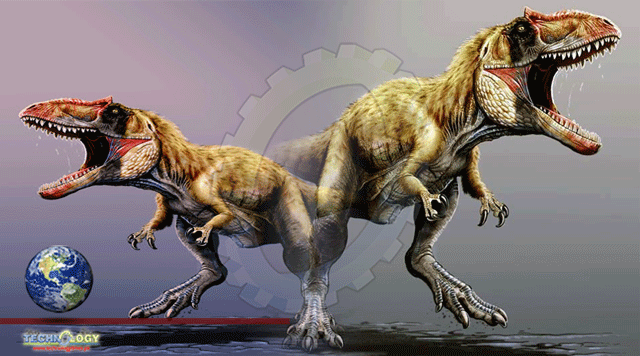A new genus and species of carcharodontosaurian theropod dinosaur has been identified from a fossilized jawbone found in the Republic of Uzbekistan.

Carcharodontosauria is a group of medium to large-sized predatory theropod dinosaurs.
These theropods thrived on the southern supercontinent Gondwana from the Late Jurassic epoch to the end of the Cretaceous period, but disappeared on the northern supercontinent Laurasia after the Turonian stage of the Cretaceous.
They attained extreme body sizes, greater than 6 tons, rivaling those of tyrannosaurids and spinosaurids.
Considered as the apex predators in Laurasia until the mid-Cretaceous, carcharodontosaurians and other large-bodied theropods disappeared after which tyrannosauroids occupied top predatory niches during the last 20 million years of the Cretaceous period.
Scientifically named Ulughbegsaurus uzbekistanensis, the new carcharodontosaurian dinosaur roamed our planet during the Late Cretaceous epoch, between 92 and 90 million years ago.
“We described this new genus and species based on a single isolated fossil, a left maxilla, or upper jawbone,” said lead author Dr. Kohei Tanaka, a paleontologist at the University of Tsukuba.
The large left maxilla of Ulughbegsaurus uzbekistanensis was found in the Bissekty Formation — a formation yielding a rich and diverse assemblage of dinosaurs and other vertebrates from fragmentary remains — in the Kyzylkum Desert, Uzbekistan.
“The preserved portion of the maxillary tooth row from the second to the eighth alveoli is approximately 23 cm (9 inches) in length, which is at least about 20% longer than a relatively large (greater than 1 ton) allosauroid, such as Yangchuanosaurus,” Dr. Tanaka and colleagues said.
“The measurement indicates that this individual of Ulughbegsaurus uzbekistanensis was at least 7 m (23 feet) in total body length and over one ton in body mass.”
“Additional regression analyses using estimates of the maxilla length and maxillary tooth row length measurements indicate it was 7.5-8 m (24.6-26.2 feet) in body length.”
Ulughbegsaurus uzbekistanensis was probably the apex predator of the Bissekty ecosystem and co-occurred with smaller tyrannosauroids and dromaeosaurids.
“The discovery of Ulughbegsaurus uzbekistanensis fills an important gap in the fossil record, revealing that carcharodontosaurians were widespread across the continent from Europe to East Asia,” said senior author Professor Yoshitsugu Kobayashi, a paleontologist at the Hokkaido University Museum.
“As one of the latest surviving carcharodontosaurians in Laurasia, this large predator’s coexistence with a smaller tyrannosauroid reveals important constraints on the transition of the apex predator niche in the Late Cretaceous.”
Originally Published By SciNews